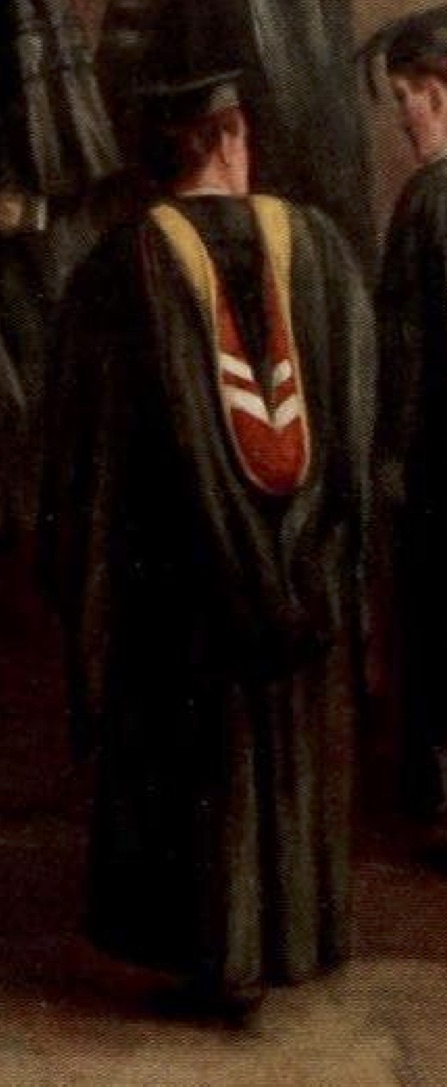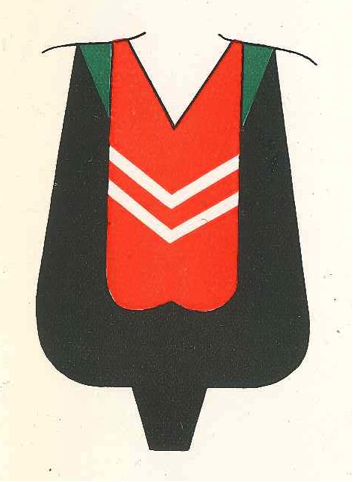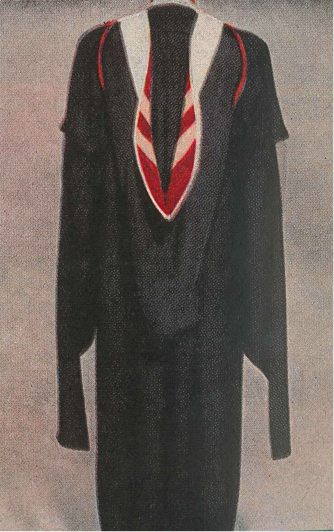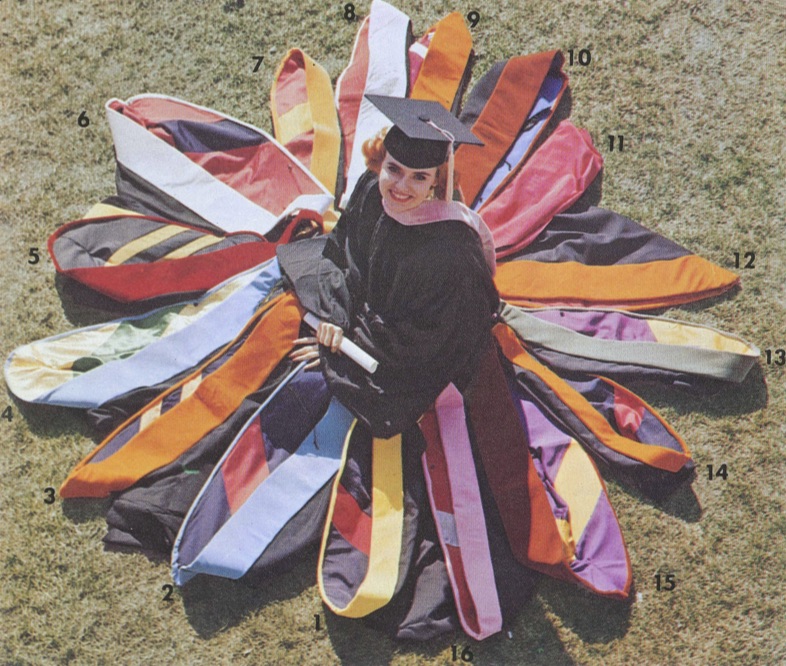Cornell University
New York
1865
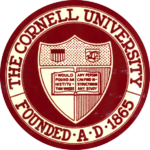



Cornell students chose carnelian and white school colors in 1869 or 1870. Carnelian is a play on the name “Cornell”, and to emphasize the joke the color was sometimes written as “cornelian”, a variant spelling. The shade of red was said to be similar to carmine.
Citations in the World Almanac (listed by cover date; color information is from the previous year): carnelian/white (1895-1935)
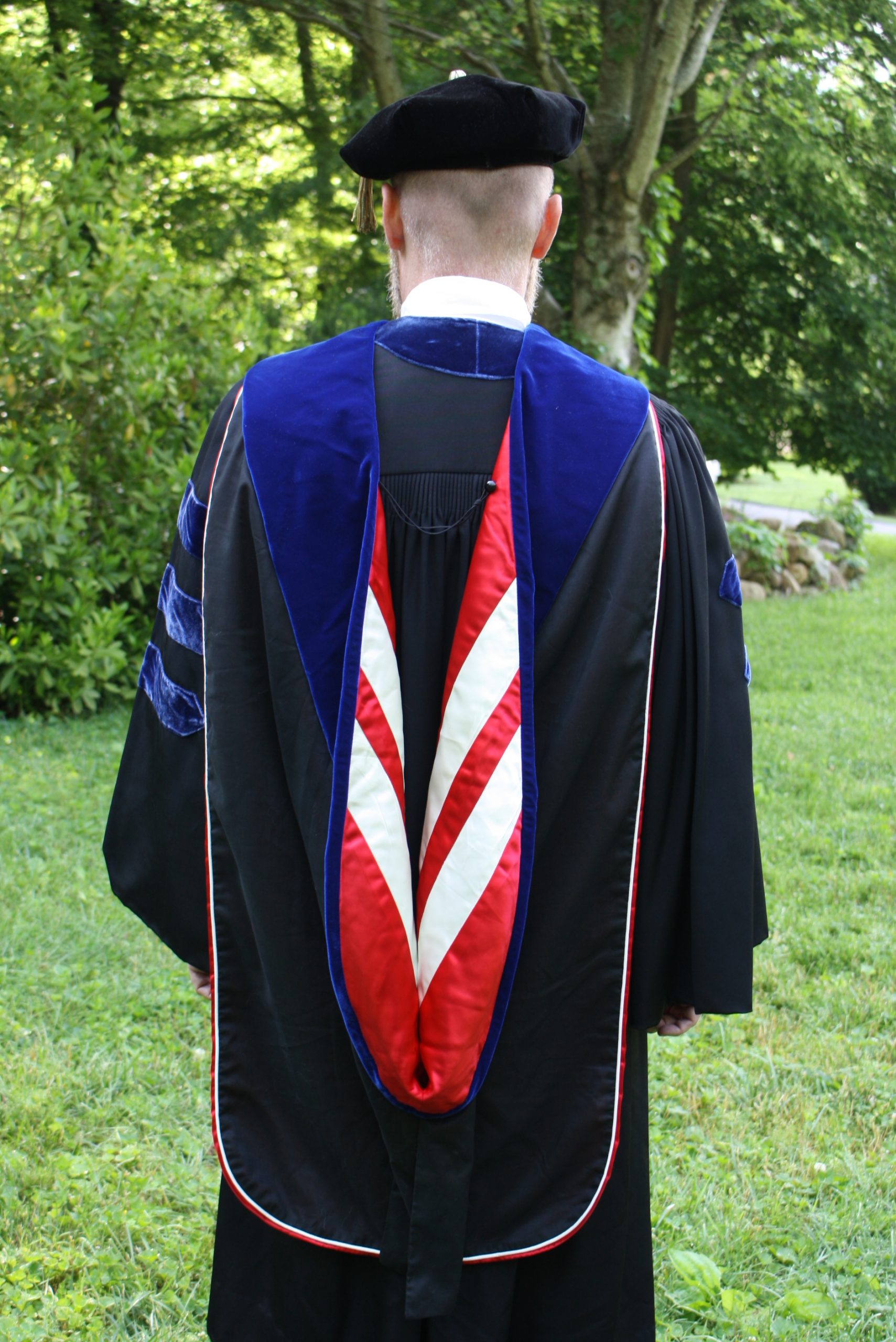
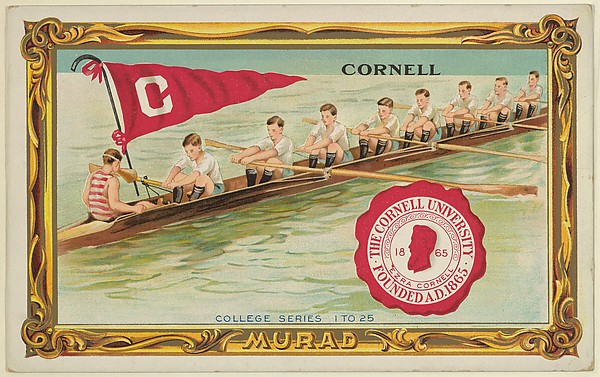
Until his death in 1921, Gardner Cotrell Leonard was the Director of the Intercollegiate Bureau of Academic Costume (IBAC) and a partner in the firm of Cotrell & Leonard, an academic costume manufacturer and the depository for the records of the IBAC. If one assumes that a college or university was assigned a hood lining pattern by the IBAC when academic costume was ordered from Cotrell & Leonard, client lists for Cotrell & Leonard can help one estimate the approximate date that lining pattern was approved by the IBAC.
Cornell University first appeared in Cotrell & Leonard advertisements in numerous 1897 sources: Graduate Courses: A Handbook for Graduate Students 1897-1898, the Bowdoin Bugle yearbook, the College Year-Book and Athletic Record, and the 2 November Harvard Lampoon. This is consistent with an advertisement in The 1904 Class Book of Cornell University that said Cotrell & Leonard first provided academic costume for the Cornell class of 1896. These advertisements did not describe the colors or heraldic pattern of Cornell’s hood lining, but the university’s hood was cited in the 27 July 1902 edition of The Argus, an Albany NY newspaper, which contained a list of IBAC hood lining patterns that had been assigned to some of the more prestigious colleges and universities of the time. Here Cornell University was stated to have a hood that was lined “carnelian” with two white chevrons. An Intercollegiate Bureau list from c.1912 said that “‘Carnelian’ is a mineralogical term and refers to a translucent clear red variety of quartz or chalcedony. As the color of the stone varies in shade, it is not a very definite term, but the hue lies somewhere between scarlet and crimson.”
By the mid 1920s the IBAC was describing carnelian as a cardinal shade. By the IBAC’s own reckoning, cornelian/carnelian is a cardinal shade “somewhere between scarlet and crimson”, so to avoid duplicating the hoods of either Dickinson College (cardinal with a white chevron) or Boston University (scarlet with a white chevron) the Intercollegiate Bureau of Academic Costume assigned Cornell a hood lined carnelian (or cardinal) with two white chevrons. The c.1912 IBAC list mentioned above said that the two chevrons are “narrower than the ordinary chevron and are placed about two inches apart so that the color of the lining shows between them as well as above and below.” Ordinary chevrons were three inches in width; the narrow chevrons prescribed for Cornell were about 1½ inches in width.
